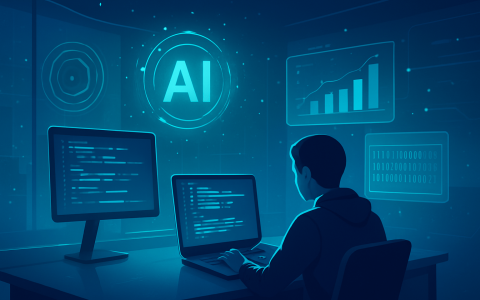Introduction
The rise of technology-driven ecosystems across India has completely transformed how students, professionals, and entrepreneurs approach IT careers. From Google offices in India to local innovation clusters, these hubs are making IT careers more accessible than ever before. They act as bridges between learning and employment, nurturing a culture of skills development, collaboration, and innovation.
This article explores how India’s tech ecosystems – powered by global giants, startups, and academic partnerships – are breaking down barriers for students and professionals. We’ll examine how these hubs create opportunities for IT education, why their locations matter, and how they pave the way for a future-ready workforce.
What Are Tech Ecosystems?
A tech ecosystem refers to a network of technology companies, universities, training institutes, startups, and government bodies working together to drive innovation. In India, these ecosystems are concentrated in cities like Bengaluru, Hyderabad, Gurugram, and Pune – often nicknamed the “Silicon Valleys” of India.
For example, Google offices in India not only serve as corporate headquarters but also anchor hubs for digital training, research collaborations, and startup mentorship. Surrounding businesses, incubators, and training programs feed into this cycle, creating a fertile environment for IT growth.
The Role of Global Tech Giants
Multinational corporations play a key role in making IT careers more accessible:
-
Training Programs: Companies like Google, Microsoft, and Amazon run digital skill-building initiatives such as cloud computing and AI certifications.
-
Startup Support: Innovation centers attached to these companies offer mentorship and seed funding for young entrepreneurs.
-
Job Pathways: Students trained in programs led by global tech companies often get direct recruitment opportunities.
In short, tech giants help democratize access to IT skills by blending corporate goals with community development.
Why Location Matters
Strategic placement of Google offices in India and other tech hubs is not accidental. These ecosystems thrive in cities with strong university networks, high internet penetration, and business-friendly policies.
-
Bengaluru attracts the highest number of software engineers and data scientists.
-
Hyderabad is a hub for cloud computing and AI research.
-
Pune combines IT development with manufacturing industries, creating hybrid opportunities.
By being close to educational institutions, these hubs make it easier for students to intern, collaborate, and transition into careers.
How Tech Ecosystems Improve Accessibility
1. Skill Development for All
India’s digital training programs, often supported by companies with offices in India, ensure that IT education isn’t restricted to elite universities. Online platforms and community training centers now allow students from smaller towns to upskill and compete for global jobs.
2. Affordable Learning Pathways
Partnerships between companies like Google and the Indian government often subsidize IT certifications, making them affordable for learners across income groups.
3. Remote Work Opportunities
With the rise of hybrid models, students trained through ecosystem-led programs can now access jobs in Google offices in India or abroad without leaving their hometowns.
Case Study: Google’s Digital Initiatives in India
One of the most impactful examples of a tech ecosystem improving accessibility is Google’s Digital Unlocked and Skill India collaborations. These programs provide free or low-cost training in coding, data analytics, cloud computing, and digital marketing.
Graduates of these programs not only enter IT careers but also help small businesses digitize their operations – multiplying the ecosystem’s impact.
The Education Connection
Tech ecosystems directly support IT education learning in several ways:
-
Universities near tech hubs benefit from guest lectures, research funding, and curriculum input from companies.
-
Students gain access to real-world projects through internships.
-
Continuous collaboration ensures academic programs stay aligned with industry demand.
This connection ensures that graduates are job-ready and adaptable.
Opportunities for Students and Professionals
-
Internships & Apprenticeships – Hands-on opportunities at tech hubs provide early exposure.
-
Upskilling Programs – Certifications in AI, cloud, and cybersecurity enhance employability.
-
Entrepreneurship – Startup incubators help graduates launch ventures with mentorship from companies like Google.
-
Global Networking – Exposure to multinational companies in India broadens career horizons.
Challenges That Remain
While India’s tech ecosystems are thriving, challenges still exist:
-
Unequal access to high-speed internet in rural areas.
-
High competition for limited top-tier jobs.
-
The digital divide between English-speaking learners and regional language speakers.
Overcoming these challenges will ensure that IT careers are accessible not only in urban hubs but across the nation.
The Future of IT Ecosystems in India
As Google offices in India and other global players continue to expand, India’s role as a global IT leader will only grow. Future trends include:
-
AI-driven learning hubs for personalized skill development.
-
Cross-border collaborations that allow Indian students to work on global projects.
-
Regional tech centers in Tier-2 and Tier-3 cities to expand accessibility beyond metros.
Conclusion
India’s tech ecosystems are more than just clusters of IT companies – they are engines of growth, education, and opportunity. Anchored by global offices like Google’s in India, they create environments where learning and career development thrive together.
By blending corporate investment, government support, and academic collaboration, these ecosystems ensure IT careers remain accessible to students from diverse backgrounds. As digital transformation accelerates, the future of IT education learning in India looks both inclusive and globally competitive.

